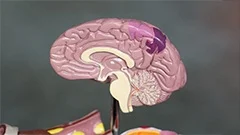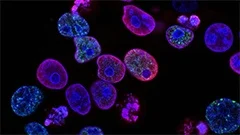Introduction
The cytoskeleton is an intricate and vital network of protein filaments within eukaryotic cells that provides structural support, enables cellular movement, and aids in various intracellular transport processes. This network is primarily composed of three types of filaments: microtubules, actin filaments (microfilaments), and intermediate filaments. The cytoskeleton plays a crucial role in maintaining the shape and integrity of cells, as well as facilitating the division and movement of cells during development and tissue regeneration.
Background
The concept of a cellular scaffold has been recognized since the late 19th century when German botanist Walther Flemming observed chromosomal movement during cell division in his seminal work on mitosis (Flemming, 1879). However, it was not until the mid-20th century that electron microscopy allowed for visualization of the cytoskeleton's structural components. The term "cytoskeleton" was coined by T. J. Wilson and B. G. Knipe in 1968 (Wilson & Knipe, 1968), and since then, research has elucidated the essential functions of this intracellular network.
Microtubules
Overview
Microtubules are hollow, cylindrical polymers made up of tubulin proteins that self-assemble to form a rigid rod-like structure. They play significant roles in various cellular processes, including cell division (mitosis and meiosis), intracellular transport, cell shape maintenance, and cell motility.
Structure
Microtubules consist of α- and β-tubulin subunits arranged helically around a central hollow channel. Each tubulin dimer contains an amino acid sequence that repeats every 8 nm along the microtubule length, resulting in a periodicity of approximately 13 nm. The arrangement of tubulins creates protofilaments, which are bundled together to form the microtubule wall.
Regulation and Dynamics
The dynamics of microtubules rely on the balance between their polymerization (growth) and depolymerization (shrinkage). This process is controlled by various proteins that act as regulatory factors, such as GTPases (e.g., tubulin-binding proteins like EB1), kinesins (motor proteins that transport vesicles along microtubules during intracellular transport), and dynein (a motor protein responsible for movement towards the minus ends of microtubules).
Actin Filaments (Microfilaments)
Overview
Actin filaments, also known as microfilaments, are thin, branched filamentous proteins that play essential roles in various cellular processes, including cell shape maintenance, movement, and intracellular transport. Actin filaments are found throughout the cytoplasm but are particularly abundant at the cell cortex (the area just below the plasma membrane).
Structure
Actin is a globular protein that forms dimers in solution. In vitro, actin dimers can self-assemble into filaments upon polymerization. Actin filaments have a diameter of approximately 7 nm and are highly dynamic, constantly undergoing assembly and disassembly events.
Regulation and Dynamics
The dynamics of actin filaments are regulated by various proteins that control their assembly and disassembly. These regulatory proteins include formins (promote actin nucleation), Arp2/3 complex (initiates branching during actin polymerization), profilin (enhances actin monomer solubility and regulates filament barbed ends), and severing proteins (such as cofilin and gelsolin) that cleave actin filaments, promoting their disassembly.
Intermediate Filaments
Overview
Intermediate filaments are thick, insoluble protein fibers that provide structural support to cells. They are found in the cytoskeleton of various cell types, including epithelial, endothelial, and muscle cells. Intermediate filaments play essential roles in maintaining cell shape, preventing cellular adhesion, and providing resistance against mechanical stress.
Structure
Intermediate filament proteins are characterized by a central α-helical coiled-coil region flanked by non-helical head (N-terminus) and tail (C-terminus) domains. They assemble into protofilaments that associate laterally to form larger, higher-order fibers. Intermediate filament proteins can be grouped into six classes: keratins, type I and II; vimentin; desmin; glial fibrillary acidic protein (GFAP); peripherin; and nestin.
Regulation and Dynamics
The dynamics of intermediate filaments are less well understood than those of microtubules and actin filaments due to their greater stability. However, it is known that intermediate filament proteins can undergo post-translational modifications, such as phosphorylation, that alter their interactions with other cytoskeletal components and contribute to cellular responses to stress or changes in cell state.
Conclusion
The cytoskeleton is a dynamic and essential network of protein filaments within eukaryotic cells that provides structural support, enables cellular movement, and facilitates various intracellular transport processes. Its three main components - microtubules, actin filaments (microfilaments), and intermediate filaments - each play distinct roles in maintaining cell structure and function. Understanding the cytoskeleton is essential for gaining insights into various cellular processes and their regulation, as well as developing targeted therapeutic strategies for diseases involving abnormalities in cytoskeletal dynamics or composition.
MCQ: Test your knowledge!
Do you think you know everything about this course? Don't fall into the traps, train with MCQs! eBiologie has hundreds of questions to help you master this subject.
To go further...
These courses might interest you
Create a free account to receive courses, MCQs, and advice to succeed in your studies!
eBiologie offers several eBooks containing MCQ series (5 booklets available free for each subscriber).








